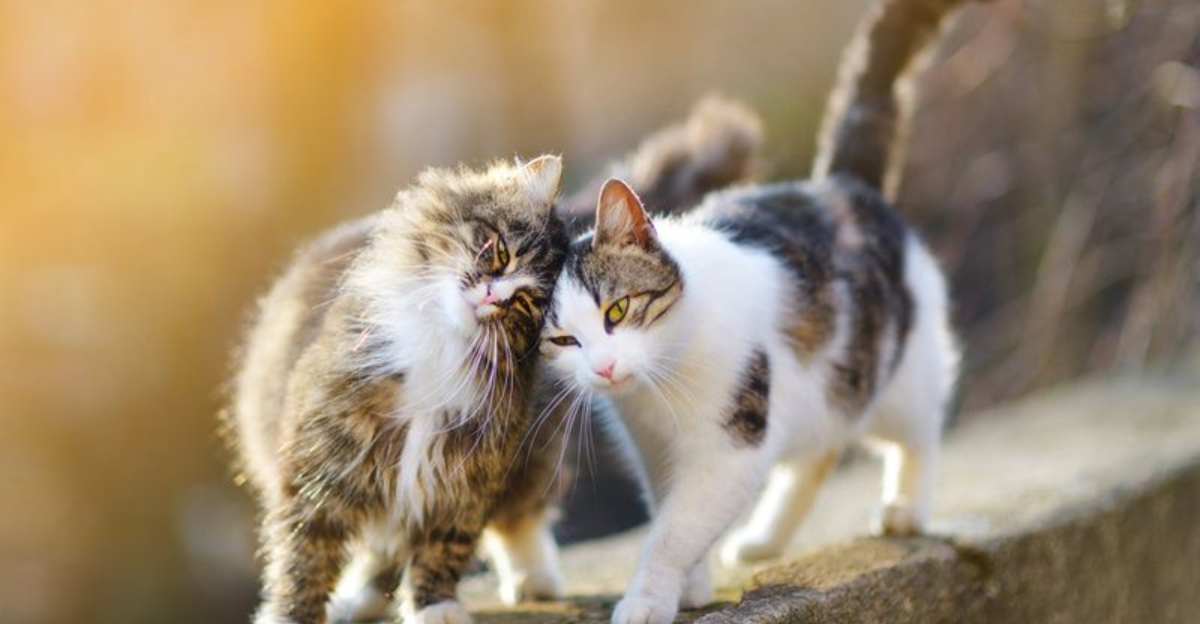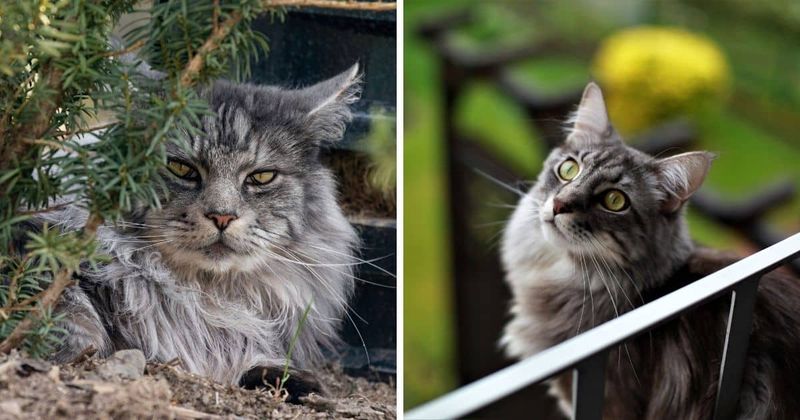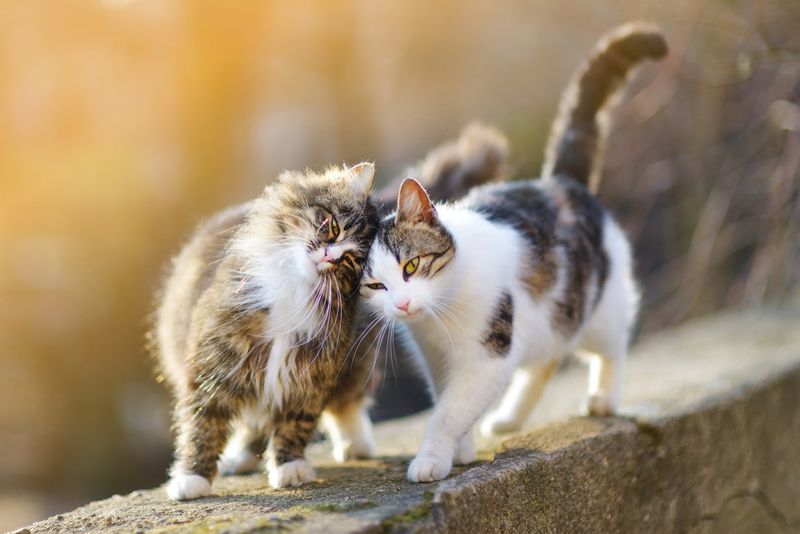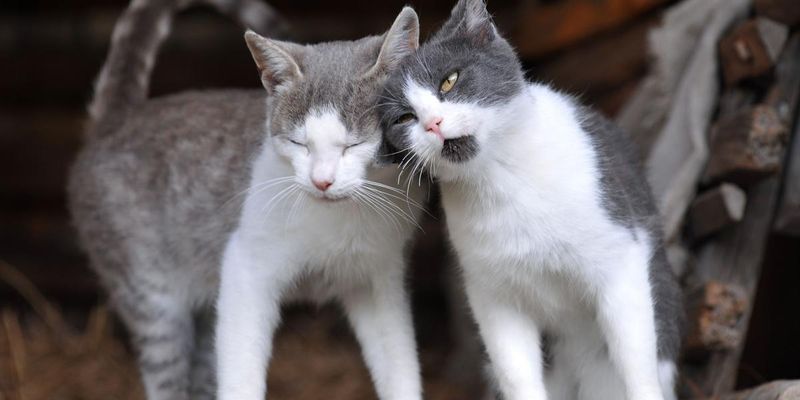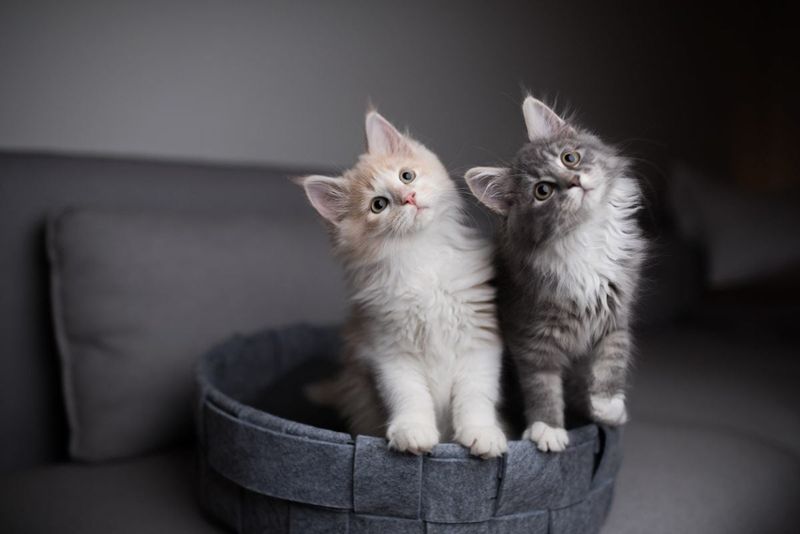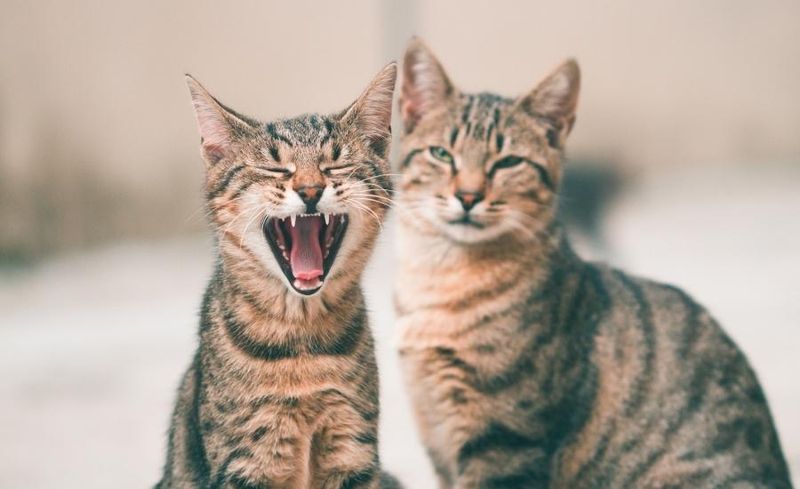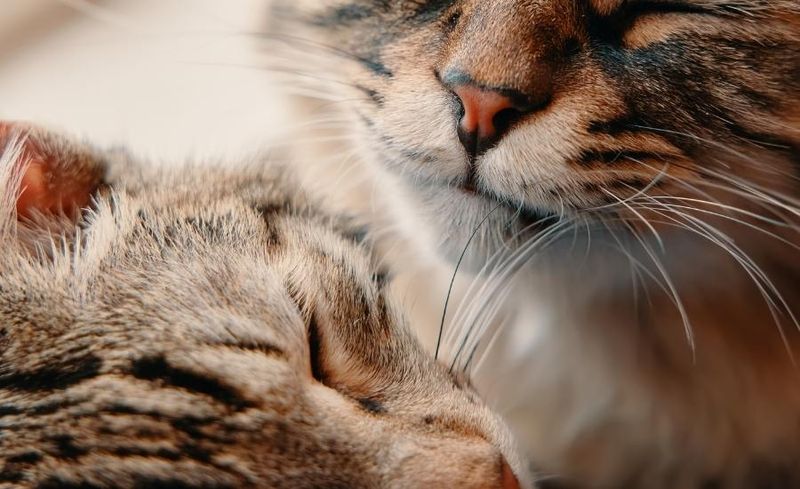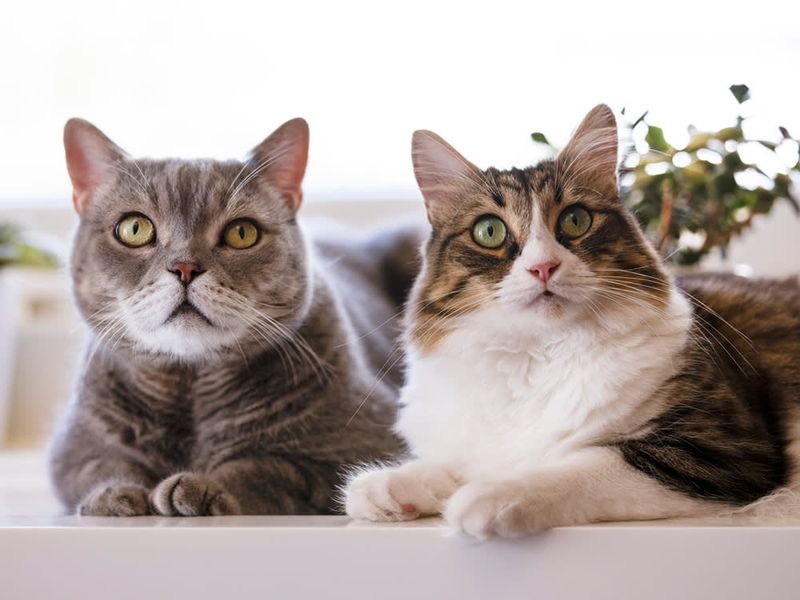📖 Table of Content:
Trying to decide between adopting a male or female cat? While every cat is unique, there are some general differences in behavior, health, and temperament that can help guide your decision. In this post, we break down 10 key distinctions between male and female cats—covering everything from affection levels and territorial habits to grooming needs and social dynamics. Whether you’re a first-time cat parent or adding to your feline family, this guide will help you choose the right fit for your home.
1. Size and Build
Male cats often tower over their female counterparts, their size reminiscent of a gentle giant. This difference is stark in breeds like Maine Coons, where males flaunt their robust build. Their female counterparts may appear more graceful and dainty. Such contrasts can influence your choice if you prefer a lap cat or a feline that commands presence. Interestingly, some owners find the larger, comforting body of a male cat incredibly reassuring. Yet, others cherish the nimble elegance of a female. Choosing between them can reflect your taste in feline aesthetics and interaction.
2. Personality and Sociability
The social butterfly of the feline world often wears a male coat. These cats typically soak up attention, relishing the company of their human companions. Females, in contrast, sometimes value solitude, appreciating quiet moments over constant interaction. Imagine a male cat following you around the house, curious and affectionate. Meanwhile, a female might grace you with her presence, choosing her moments with calculated charm. These personality traits can shape the very nature of your relationship with your furry friend. Your choice might depend on whether you prefer a shadow or an independent spirit.
3. Territorial Behavior
Unneutered males are notorious for marking their territory, a behavior that can be curbed with neutering. Picture a spritz of determination as they assert their presence. Females, however, may display territorial instincts in subtler ways, like guarding a favorite nap spot. This silent claim to space can be less intrusive but equally significant. These behaviors might sway your decision if you’re keen on maintaining a harmonious household. The territorial nature of cats can reflect their need for personal space or their desire to assert dominance within their environment.
4. Energy Levels
A male cat’s boundless energy can light up a room. Their playful antics often bring laughter and liveliness into a home. Females, on the other hand, may prefer a more dignified playstyle, observing before engaging. Think of a young male cat zooming across the floor in a burst of energy, while his female counterpart watches with contemplative eyes. These differing energy levels cater to various lifestyles. While some enjoy the constant thrill of a playful male, others may appreciate the serene presence of a more reserved female.
5. Health Considerations
Health concerns can weigh heavily in decision-making. Male cats, prone to urinary issues, require special diets and attention. Imagine frequent vet visits to ensure their comfort and well-being. Females, however, face risks like mammary tumors if not spayed. Regular check-ups can mitigate these concerns, ensuring a long, healthy life. Understanding these potential health risks can guide your choice, balancing care requirements and peace of mind. Such considerations not only impact your cat’s health but also your role as a caregiver and the nature of your companionship.
6. Compatibility with Other Cats
In a multi-cat household, harmony is key. Neutered males often blend seamlessly, showing a friendly disposition towards other cats. Picture them as the social glue, bringing the group together. Females, however, might be more selective, carefully choosing their companions. They can be cautious, observing new arrivals before warming up. If you have a bustling feline family, a male might fit the bill. Meanwhile, those seeking a cat content in solitude might lean towards a female. Your existing pet dynamic can influence your choice, ensuring a peaceful, cohabiting environment.
7. Cost of Spaying and Neutering
Spaying and neutering are essential yet differ in complexity and cost. Spaying a female involves a more intricate surgery, reflecting in the price tag. Picture a veterinary setting, meticulous and prepared for such procedures. Neutering males is quicker, less invasive, offering a smoother recovery. This cost difference might affect your decision if budget is a consideration. The upfront expense balances out with long-term health benefits, reducing the risk of future issues. Evaluating these costs can help in making an informed choice, preparing for both the initial investment and ongoing care.
8. Maturity and Hormonal Behaviors
Hormonal behaviors can turn a peaceful home into a lively stage. Unspayed females in heat are known for their vocal theatrics, a symphony of nature’s call. Visualize restless nights with such serenades. Unneutered males, driven by instinct, may roam, seeking a mate. These natural urges can disrupt household tranquility, yet spaying and neutering soothe this storm. Understanding these behaviors helps in anticipating potential challenges, guiding your decision. Choosing between a male or female cat may hinge on your tolerance for such natural performances and your commitment to altering them responsibly.
9. Bonding Styles
Bonding with a cat is a unique journey. Males often spread their affection generously, content among family members. They form bonds with ease, making every interaction a moment of connection. In contrast, females might reserve their affection for a chosen few, creating deep, meaningful ties. Visualize a male cat enjoying the chaos of a busy household, while a female finds solace in individual companionship. These bonding styles can influence your choice. Whether you seek a cat to share with everyone or a pet to call your own, both offer rewarding experiences.
10. Life Expectancy
Life expectancy between genders shows little variance, yet lifestyle plays a pivotal role. Neutered and spayed cats often enjoy longer, healthier lives. Imagine a serene old age, free from risks associated with heat cycles or roaming. Proper care, nutrition, and a safe environment contribute significantly to longevity. So, while gender might not dictate lifespan, your commitment as an owner will. It’s a shared journey towards a graceful, fulfilling twilight. This understanding underscores the importance of responsible ownership, ensuring your cat’s golden years are as vibrant as their youth.
